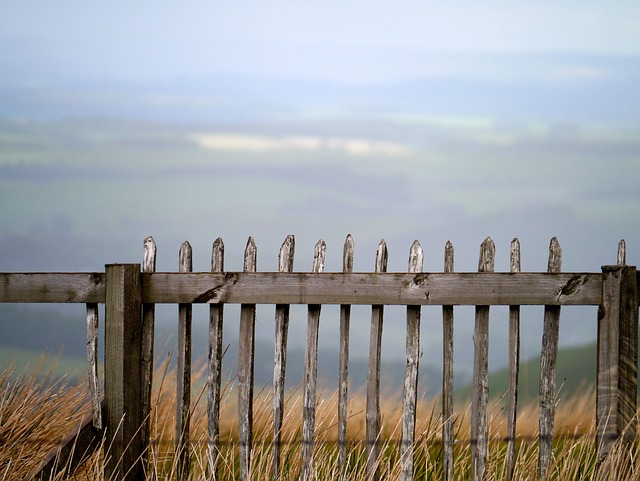In New Bedford, MA, the pursuit of eco-friendly solutions is gaining traction, and fencing materials are no exception. This article explores the diverse range of sustainable fencing options available to New Bedford residents and businesses, highlighting their numerous environmental benefits. From recycled plastic and wood composites to natural materials like bamboo and hemp, these innovative alternatives offer not just a reduced ecological footprint but also enhance local ecosystems. We delve into the installation and maintenance aspects, providing practical insights for those looking to contribute to a greener New Bedford.
- Eco-Friendly Fencing Options in New Bedford
- Benefits of Sustainable Fence Materials
- Natural Alternatives to Traditional Fencing
- How Green Fences Enhance Local Ecosystems
- Installing and Maintaining Eco-Fencing Effectively
Eco-Friendly Fencing Options in New Bedford
New Bedford, MA, residents now have a growing array of eco-friendly fencing options to choose from, catering to both environmental consciousness and aesthetic preferences. Traditional materials like wood and vinyl have long dominated the market, but innovative alternatives are gaining traction due to their reduced environmental impact and unique design capabilities.
Among these, natural fibers such as bamboo, hemp, and recycled plastic composites offer sustainable solutions. These materials not only minimize carbon footprints but also provide distinct visual appeal with their organic textures and earthy tones. Moreover, they are often more versatile in terms of customization, allowing homeowners to create unique fence designs that blend seamlessly with their landscapes.
Benefits of Sustainable Fence Materials
In an era where environmental consciousness is on the rise, opting for sustainable fence materials offers a myriad of benefits for both homeowners and the local ecosystem in New Bedford, MA. These eco-friendly alternatives not only contribute to a greener environment but also provide long-lasting solutions that can enhance the overall aesthetics of your outdoor space. One significant advantage is their reduced environmental impact; unlike traditional fences made from non-renewable resources, these materials are typically recycled or derived from sustainable sources, minimising deforestation and carbon footprint.
Moreover, sustainable fencing options often possess superior durability, ensuring they withstand harsh weather conditions while maintaining their structural integrity. Many of these materials are designed to be low-maintenance, reducing the need for frequent repairs or replacements. This longevity translates into cost savings for homeowners over time while promoting a more responsible approach to construction and land management in New Bedford.
Natural Alternatives to Traditional Fencing
In recent years, there’s been a growing trend towards eco-friendly fencing materials in New Bedford, MA. This shift isn’t just about aesthetics; it’s a response to the environmental impact of traditional fences. Wooden and vinyl fences, while popular, contribute to deforestation and can leach chemicals into the soil over time. As such, many homeowners and landscapers are now exploring natural alternatives that not only reduce their carbon footprint but also blend harmoniously with the local ecosystem.
Natural fencing options like bamboo, cedar, and recycled plastic offer durable, low-maintenance solutions. Bamboo, for instance, is a fast-growing grass that can be sustainably harvested without damaging the root system. Cedar, known for its natural resistance to rot and insects, requires minimal upkeep. Recycled plastics, transforming waste into useful materials, provide a long-lasting alternative that reduces landfill contributions. These options not only benefit the environment but also add a unique aesthetic appeal to any property.
How Green Fences Enhance Local Ecosystems
Green fences, made from eco-friendly materials like recycled plastic, bamboo, or organic fibers, offer more than just an aesthetic appeal. They actively enhance local ecosystems by providing habitats and food sources for wildlife. These natural barriers allow for the creation of microhabitats, supporting a diverse range of species, from birds and butterflies to small mammals and beneficial insects.
Moreover, green fences help in reducing the urban heat island effect, as plants and vegetation absorb sunlight, cool the air, and improve local air quality. They also act as natural filters, trapping pollutants and sediments before they enter water bodies, thereby contributing to cleaner rivers, streams, and coastal areas. This ecosystem restoration not only benefits wildlife but also creates a more beautiful, sustainable, and livable environment for New Bedford residents.
Installing and Maintaining Eco-Fencing Effectively
Installing and maintaining eco-friendly fencing effectively requires a thoughtful approach. When setting up this sustainable barrier, it’s crucial to choose a suitable location that aligns with the material’s properties. For instance, natural materials like bamboo or wood require proper drainage and may need occasional treatment to protect against moisture damage, especially in areas with high humidity or rainfall. Proper planning ensures the fence can thrive.
Maintenance involves regular cleaning, which often means using environmentally friendly cleaning solutions, and occasional repairs. Many eco-fencing options are designed to be durable and resistant to rot, making them low-maintenance over time. Staying vigilant against pests and diseases specific to each material type is also essential for maintaining the fence’s structural integrity and aesthetic appeal.
